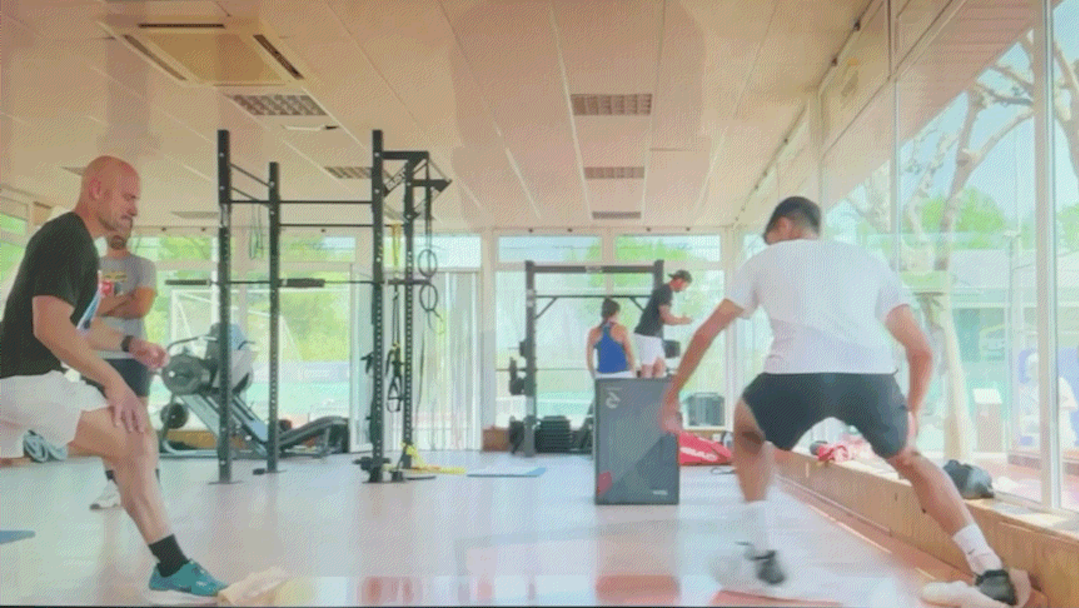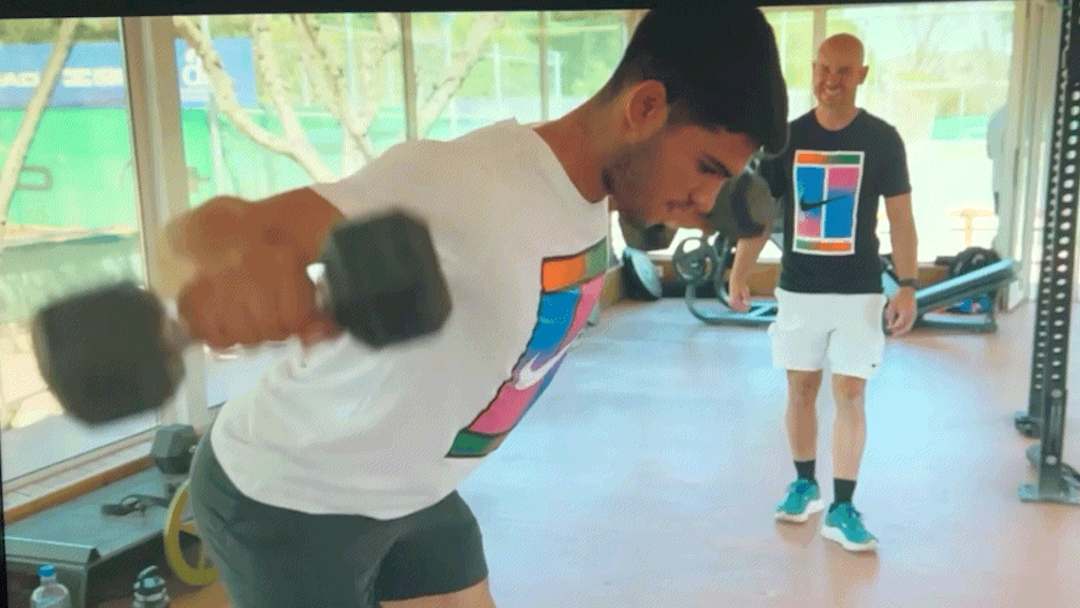I am in the midst of sharing exercises from the stretching routine that I credit with resolving my lengthy battle with plantar fasciitis. It is a sequence I now perform daily to prevent future recurrence of that malady. I also use it for muscle activation before playing tennis or engaging in high-impact aerobic training. To recap the parts of the routine that have been previously shared in order, it starts with “Yoga Toes,” and then a few minutes using a “Stick Massage Roller” on my calves, quads, and hamstrings. Those two exercises are followed up by another round of Yoga Toes.
Today’s post breaks down the next part of the sequence, which is a short yoga flow that includes Downward Dog, Walking the Dog, and Upward Dog. I inserted these movements as a way to take advantage of the transition from the standing position down to the mat and to ease into the Achilles tendon and calf stretching that is to come.
The sequence starts from the standing position by performing a forward fold and placing the hands on the ground. The next move is to step back into a high plank and lift the hips to form the inverted V of the Downward Dog pose. After holding that position for a short time, I then Walk the Dog by alternating between bending each knee while keeping the opposite leg straight. This movement activates the calves, hamstrings, and ankles. I also use that motion as a chance to flex my toes, as increasing toe mobility is a key part of alleviating strain on the plantar fascia. I Walk the Dog for maybe 4-6 cycles before transitioning into Downward Dog by lowering the hips, straightening the arms, and lifting the chest. I hover with my toes flexed momentarily before rolling over to the top of the feet to maximize the back flex. From there, I typically transition back to Upward Dog and repeat the sequence.
Downward Dog and Upward Dog are excellent yoga poses for tennis players. Downward Dog strengthens the shoulders, arms, and wrists, which are crucial aspects of the kinetic chain of efficient stroke mechanics. The pose also stretches the hamstrings, calves, and Achilles tendons, which are critical for quick sprints and lateral movements required to cover the court. As a bonus, Downward Dog decompresses the spine while engaging the core. That contributes to better balance and rotational control on the court.
Upward Dog is good for tennis because it opens up the chest and shoulders while strengthening the lower back. The pose improves spinal flexibility and helps prevent tightness that can be caused by repetitive twisting motions. It also stretches the hip flexors, which enhances agility. Tight hip flexors can limit movement, reduce stroke power, and increase injury risk. Upward Dog, Together, Walking the Dog, and Downward Dog form a terrific yoga flow for tennis players.
My daily routine of stretches and mobility work has played a vital role in keeping me pain-free and performing at my best. Each movement supports ongoing foot health and enhances flexibility and strength, which are essential for tennis. It is also a terrific way to warm up before playing the sport or performing high-impact off-court training. I will continue breaking down the complete sequence over the coming Tuesdays.
This YouTube video does a great job illustrating the Downward Dog and Upward Dog positions.



